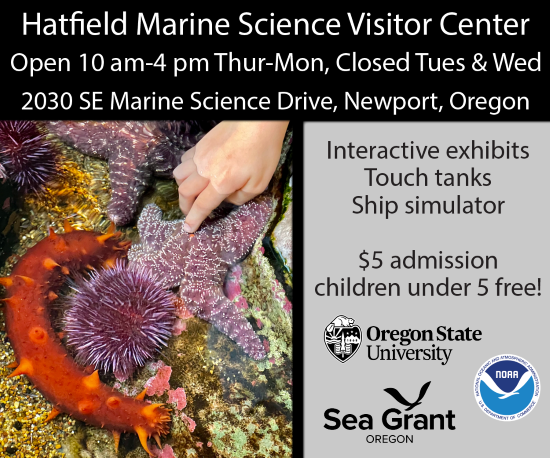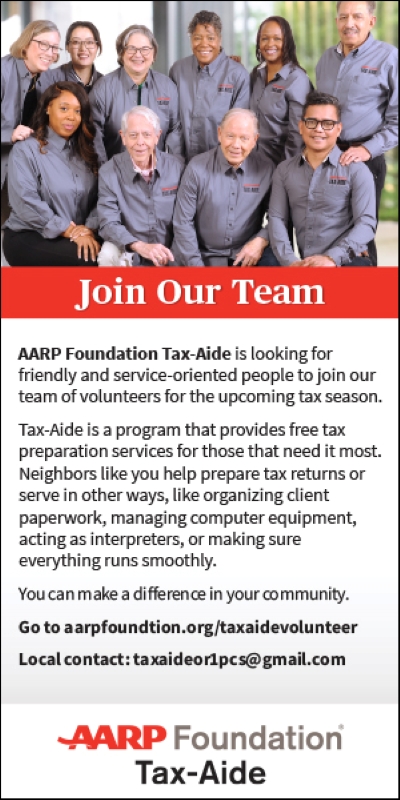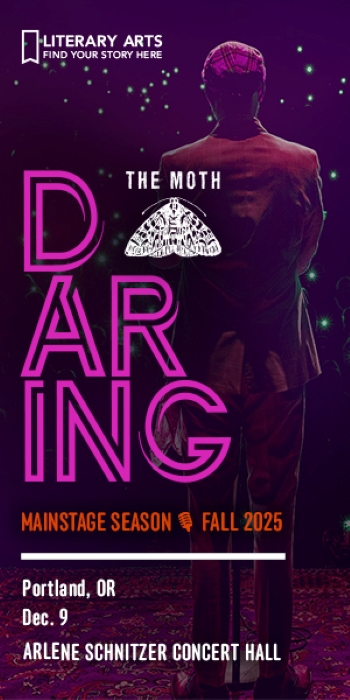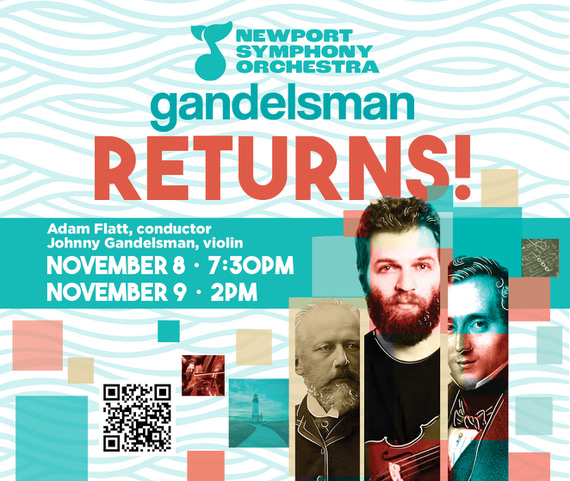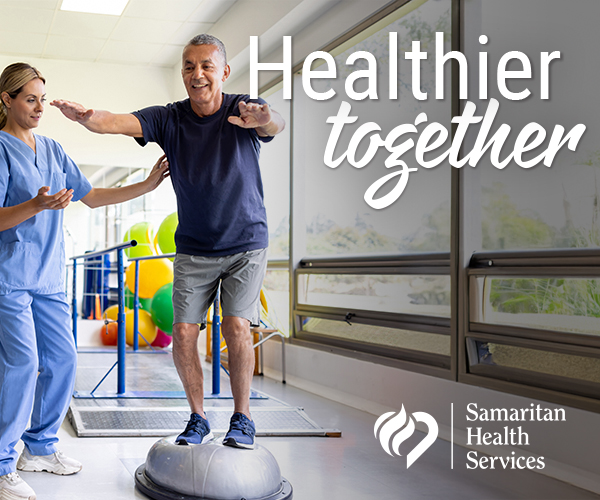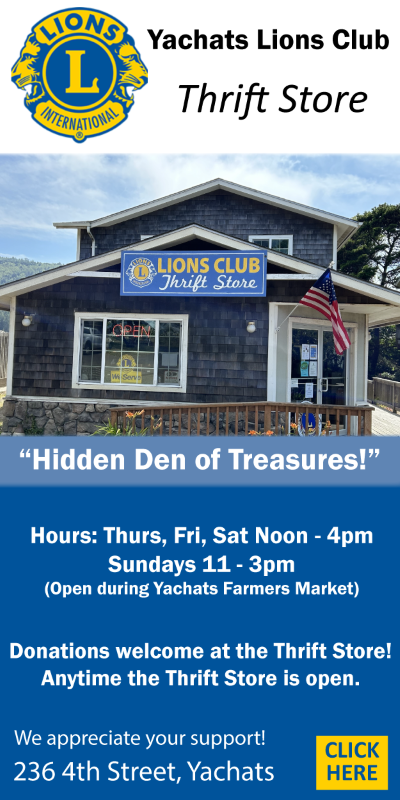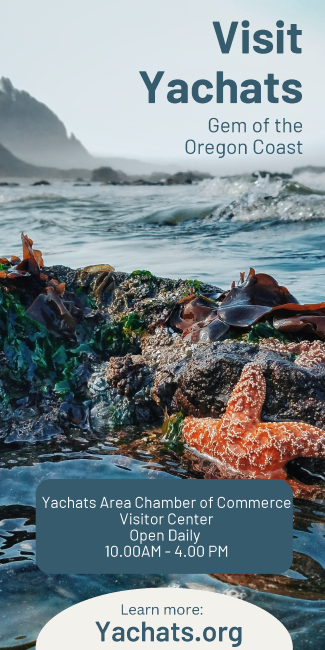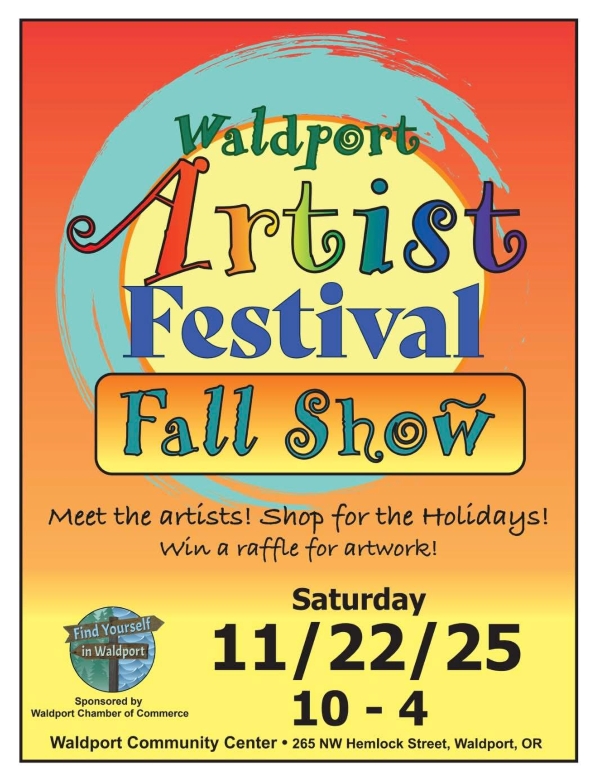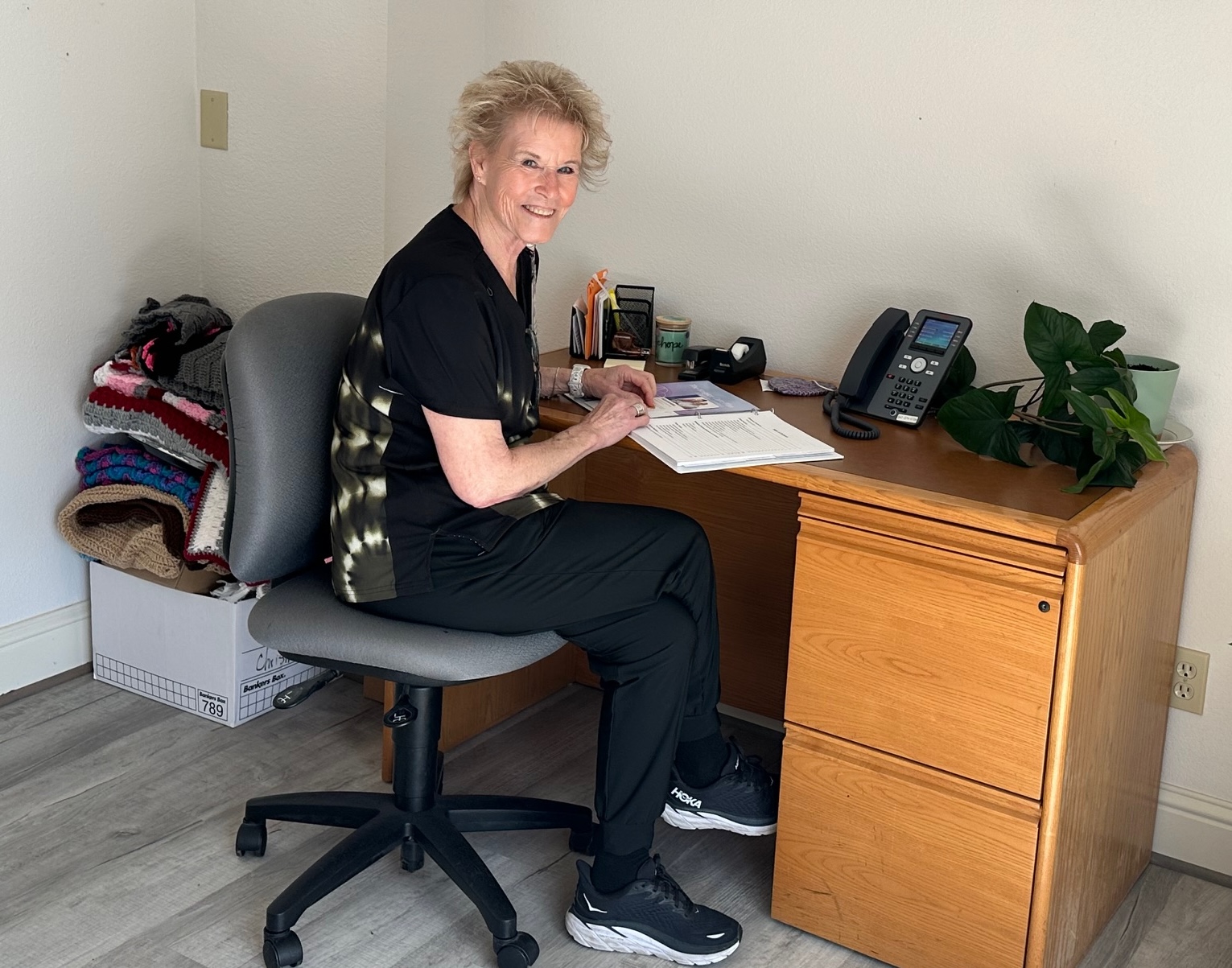
By KATHLEEN O’CONNOR/Lincoln Chronicle
People may consider the role of a hospice nurse to be extremely difficult, but Susan Barkus doesn’t feel that way at all. In fact, she describes it as “the most beautiful job in the world.”
Barkus, a registered nurse, is a case manager for Samaritan Evergreen Hospice-Coast in Newport and has been in the hospice field for 24 years.
 Barkus has always worked in health care, first spending 10 years as a laboratory technician and autopsy diener, mostly in Michigan. An autopsy diener is a person who assists a pathologist during an autopsy.
Barkus has always worked in health care, first spending 10 years as a laboratory technician and autopsy diener, mostly in Michigan. An autopsy diener is a person who assists a pathologist during an autopsy.
When Barkus’s husband was offered a new position in Utah she was shocked to learn that she didn’t qualify for either position in that state because she didn’t have an associate’s degree. She stayed home with her family for the short time they lived there, but when they moved back to Michigan she decided to pursue an old dream – becoming a registered nurse.
There were fears to overcome before pursuing that dream though. First, the cost of college shocked her. Second, the science-oriented coursework was intimidating. And third, when she stood in the registration line at Bay de Noc Community College she was sure she was the oldest person there. Sshe left the line, returning home in dismay.
But her husband, Bob, was there, and with his encouragement she found the courage to get back to the line just before registration closed.
Barkus started her nursing career at the Iron Mountain Veterans Administration hospital on the Upper Peninsula in Michigan. After just a year, she joined the Home Health and Hospice group that was part of the local health department, choosing a specialty that often allows a much longer-term relationship with each patient.
Question: Is it unusual to have been a hospice nurse for as long as you have?
Answer: It is a little unusual. Many nurses move to another specialty — some very quickly and some after a few years. The uniqueness of helping people navigate the process of dying is a gift, but it can easily be overwhelming. Nurses new to the field can’t know how they will respond to having relationship after relationship end in death. For me it is very rewarding — I like to help patients advocate for their own choices relating to dying. Often they don’t know what they want, but by listening carefully I can help them define things related to what will probably be their last days, weeks or months– what kind of care they want, who they want to see, where they want to be and what activities they hope to keep up with — all within the context of their disease progression.
I am amazed by the lives my hospice patients have lived. It is a privilege to have them share their stories with me over the time that I take care of them.
Hospice care managers can never completely “turn off” their patients when they are not on the job, but it is important to have outside interests to turn to. For me that’s reading mystery novels, spending time with my husband, and attending to my animals. I had horses for many years, and the act of brushing them was so very calming. I went to the barn once after one of my beautiful pediatric patients died, devastated. While brushing my horse she turned her head around to me and literally held me close, hugging me while I wept.
Q: What misconceptions do people have about hospice?
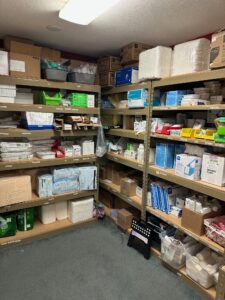
A: There are several around how long one can be in hospice. Our patients are in hospice for anywhere from 24 hours to several years. No one is “kicked out” of hospice at six months. Patients are certified for 90 days at admission, then another 90 days, then every 60 days for as long as needed. The requirement is that the person’s health is declining – that the disease process is continuing. Sometimes people improve and can “graduate”, but they can always be recertified if things change. Also, being in hospice is a choice. Patients can always change their minds and go back to active care.
Hospice is not 24-hour in-home care. Our patients can, however, contact us with questions 24 hours a day – there is always someone on call. Hospice is education about dying, providing support and information along the way.
Q: What are the most common fears that people express when they become your patient?
A: People are often anxious about the physical changes that occur as death approaches. We explain those changes and discuss them over time as they occur. Often people are worried about a particular thing – the elephant in the room, so to speak – and it takes careful listening to allow them to finally be able to say what it is they fear or what they want. They worry that they have given up or signed their life away by deciding to choose hospice, and they worry about what their family members think or want. From day-to-day they will note that they feel different. We give them a chance to describe all these things more clearly so we can provide comfort, help them feel less anxious and navigate death in a way that suits them.
Q: What does a typical day look like for you?
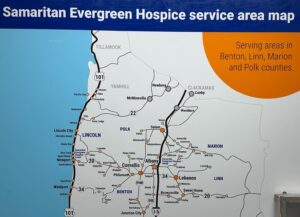
A: Samaritan Evergreen Hospice-Coast covers all of Lincoln County. There are two full-time and two part-time case managers, and we have on-call managers for backup.
My territory is from Otter Rock to Cloverdale. We start each day with a short meeting at the office in Newport and then move on to seeing our patients, usually four or five in a day, spending 30-60 minutes with each. Things can change very quickly for our patients, though, so our plans for the day are often upended. We often must order new medications, get new supplies, contact family members, or wait with people as death nears.
Patients in hospice are free to travel and are always connected to a hospice organization in the community they are visiting. Here on the coast we usually have several visiting patients that we might be called on to help.

Q: What are some of the most moving experiences you have had as a hospice nurse?
A: My mother’s only fear was what the actual moment of death would feel like. I was honored to be able to explain that it seems that the final second is quite amazing. Most hospice patients seem very peaceful in their last moments of life — many smile or open their eyes in surprise or lift their arms as their lives end.
I have taken care of many patients from other cultures, especially Native Americans. Before seeing them I have tried to learn about the customs of each tribe surrounding death, which they almost always refer to as a journey, and I have had the privilege of attending some ceremonies which are usually reserved just for tribal members.
Tell us a secret:
I once served for two years as the assistant coroner in a small town in Wyoming, pronouncing the time of death for unattended or unexpected deaths, when a police presence was required. In contrast, when one dies in hospice the death is “attended” and pronounced by the hospice nurse — no police presence is required.
- Kathleen O’Connor is a Waldport freelance writer who can be reached via email at kmoc8916@gmail.com





